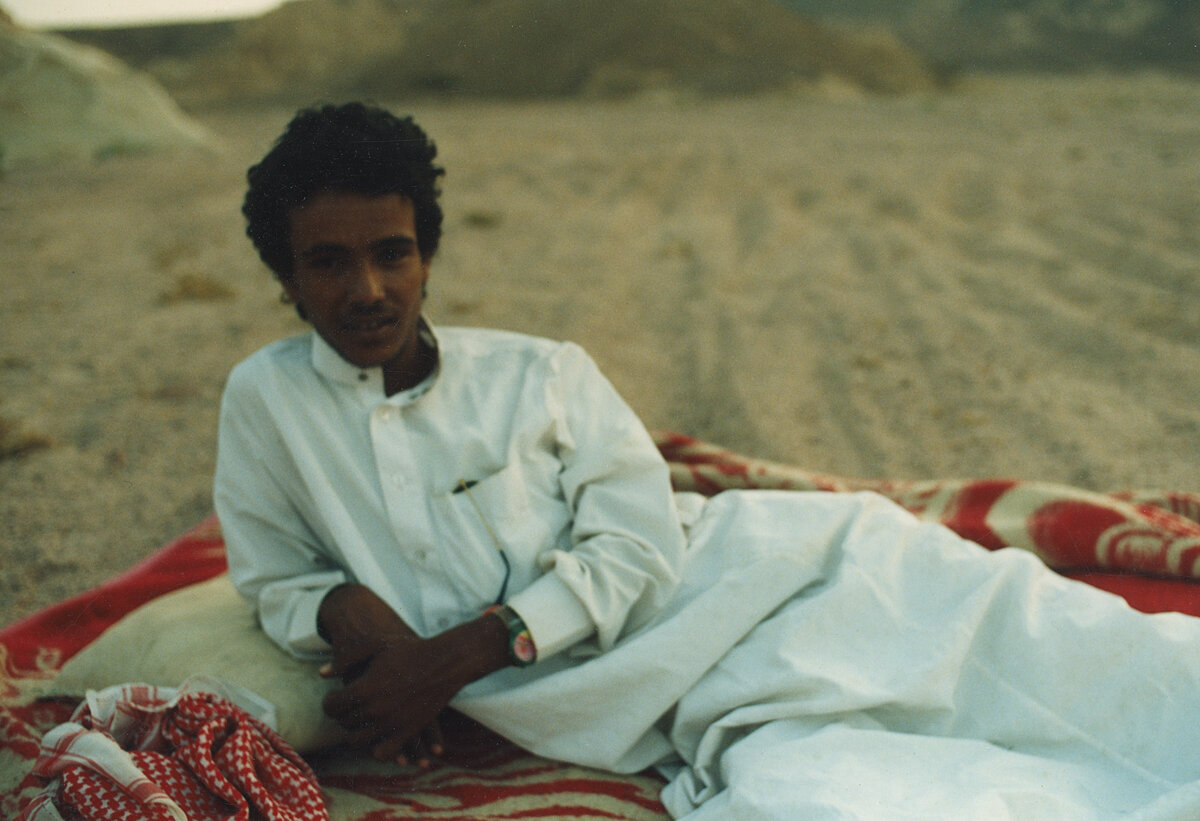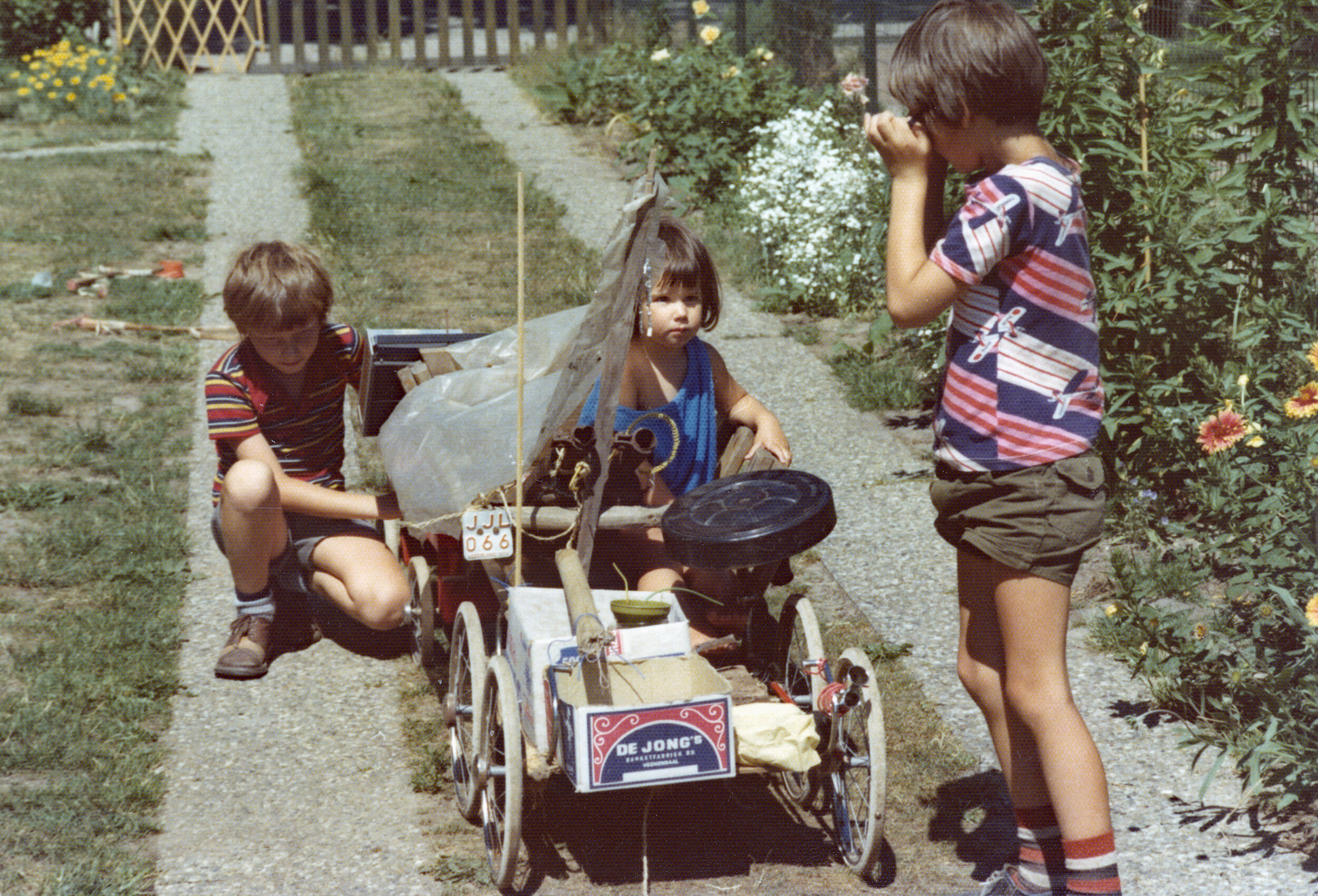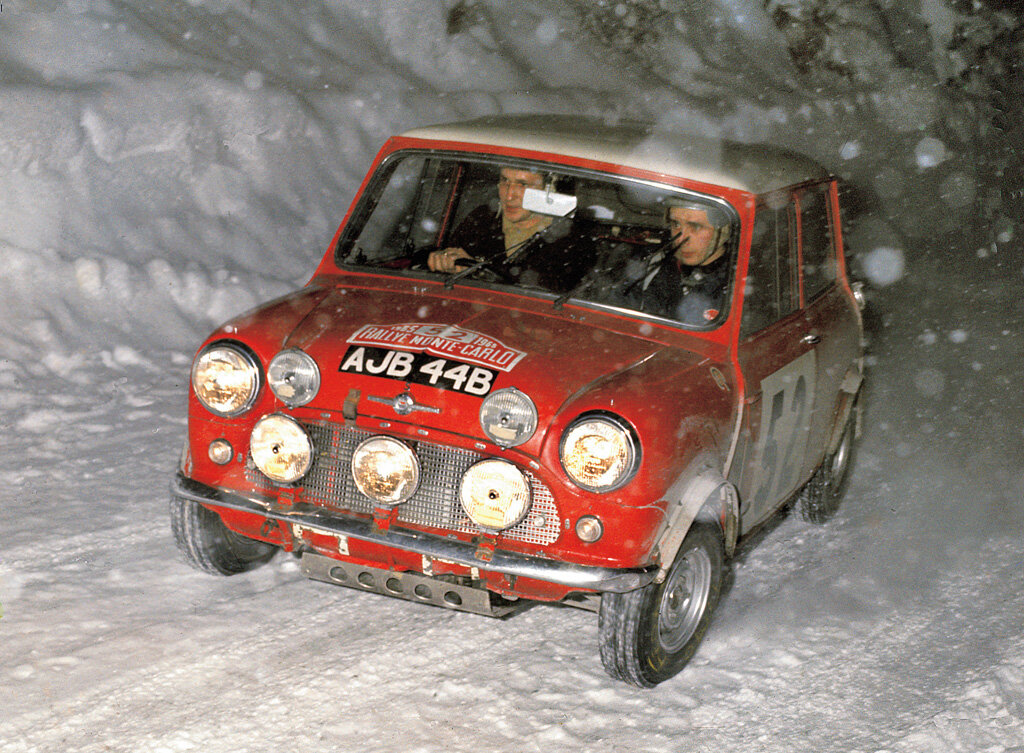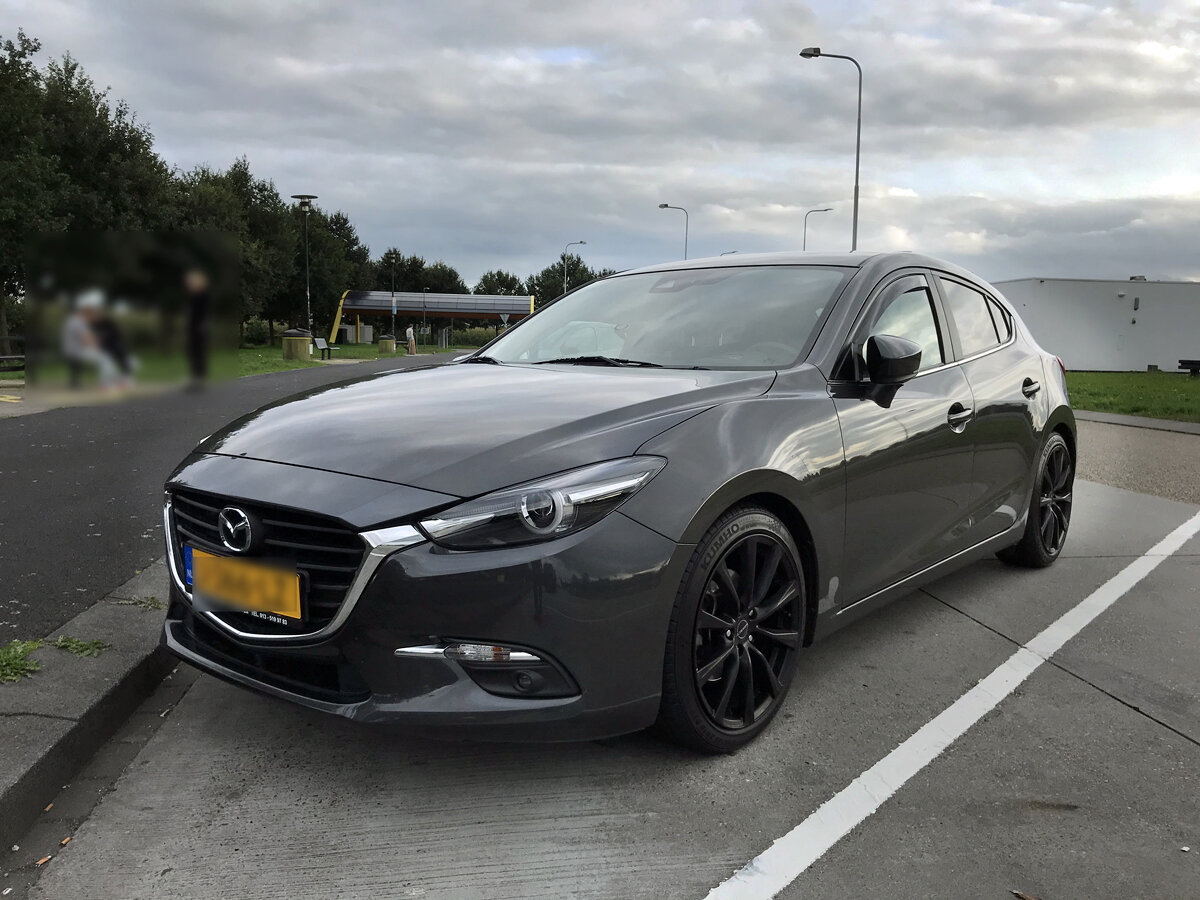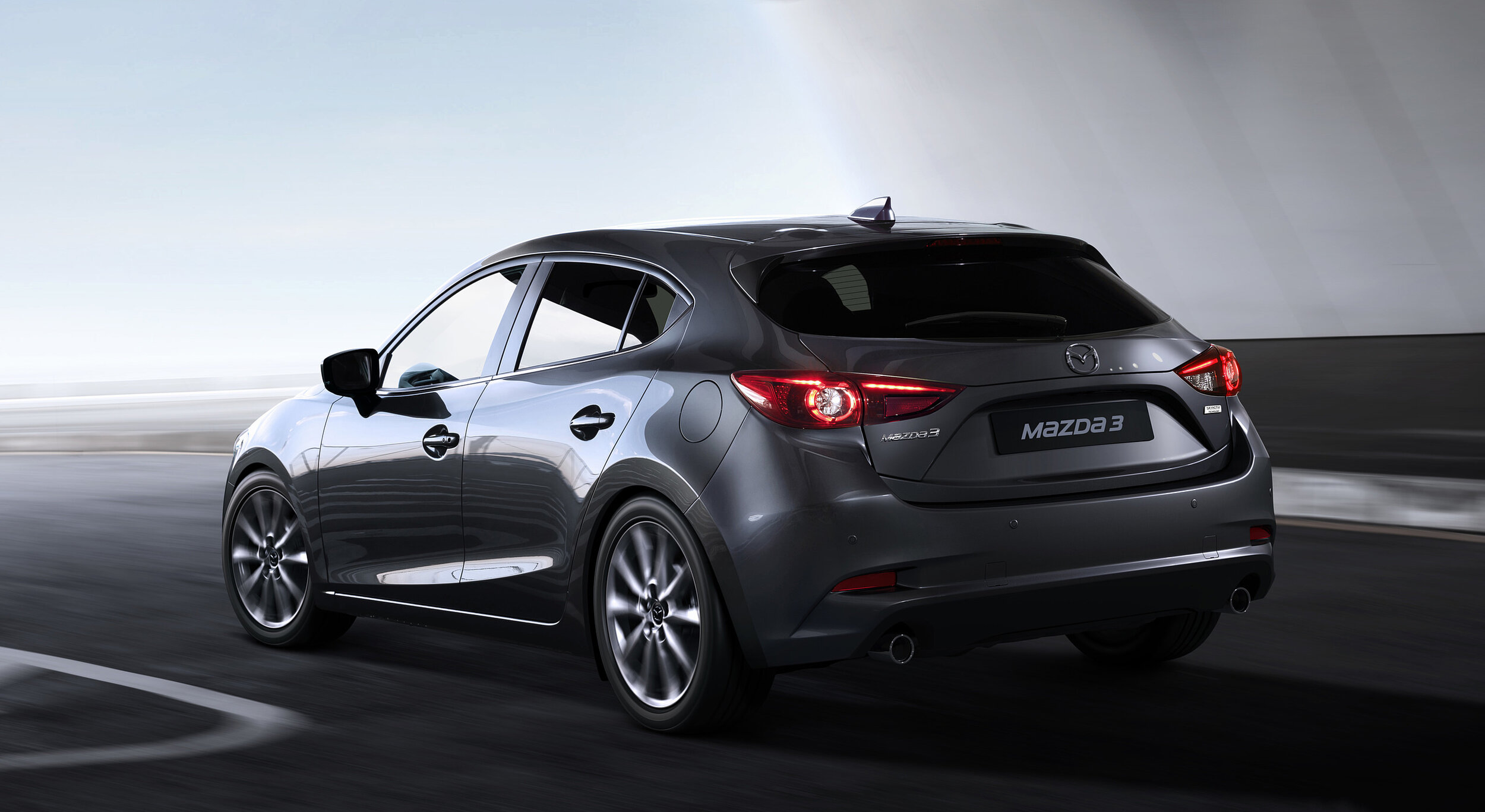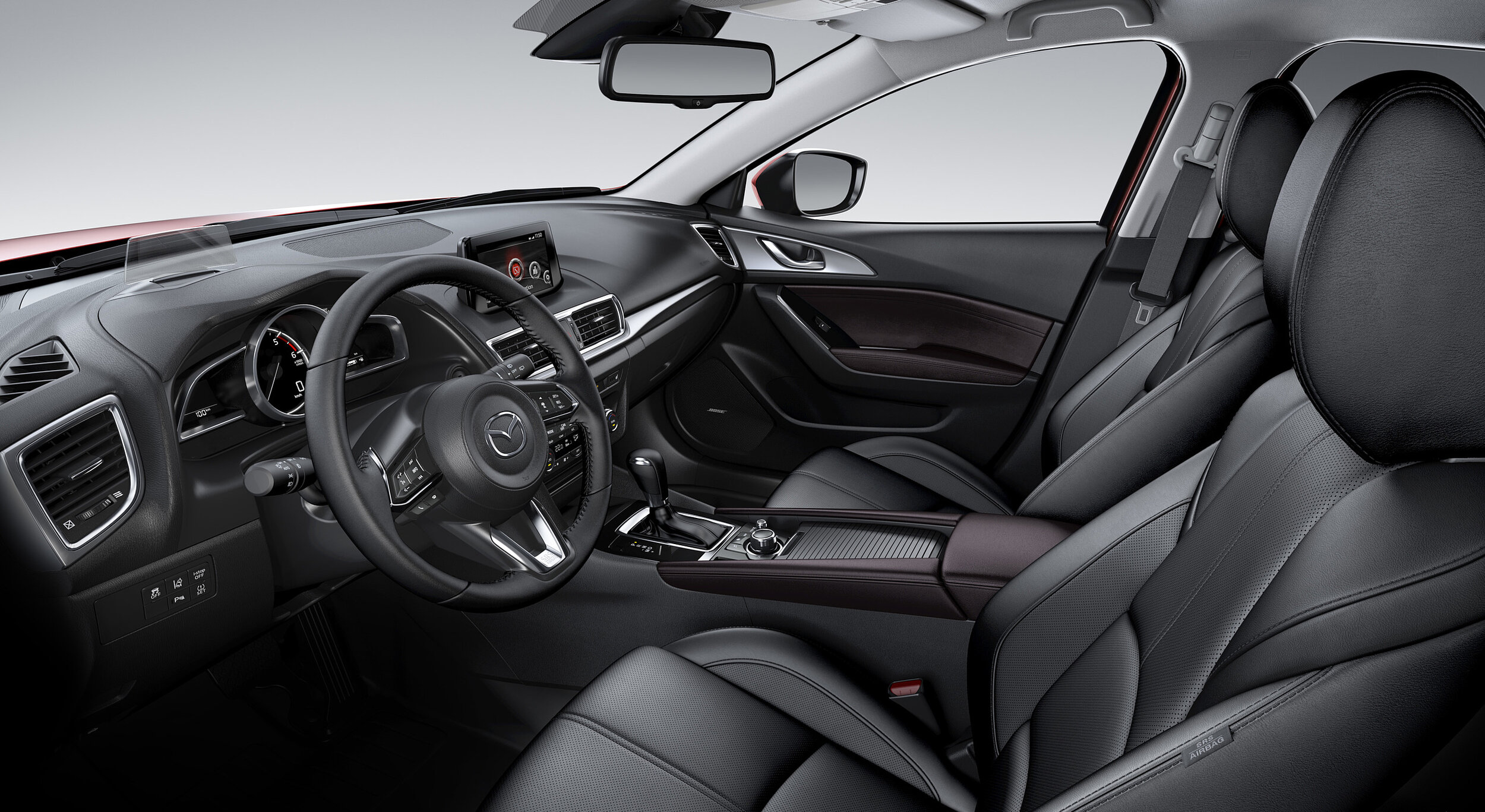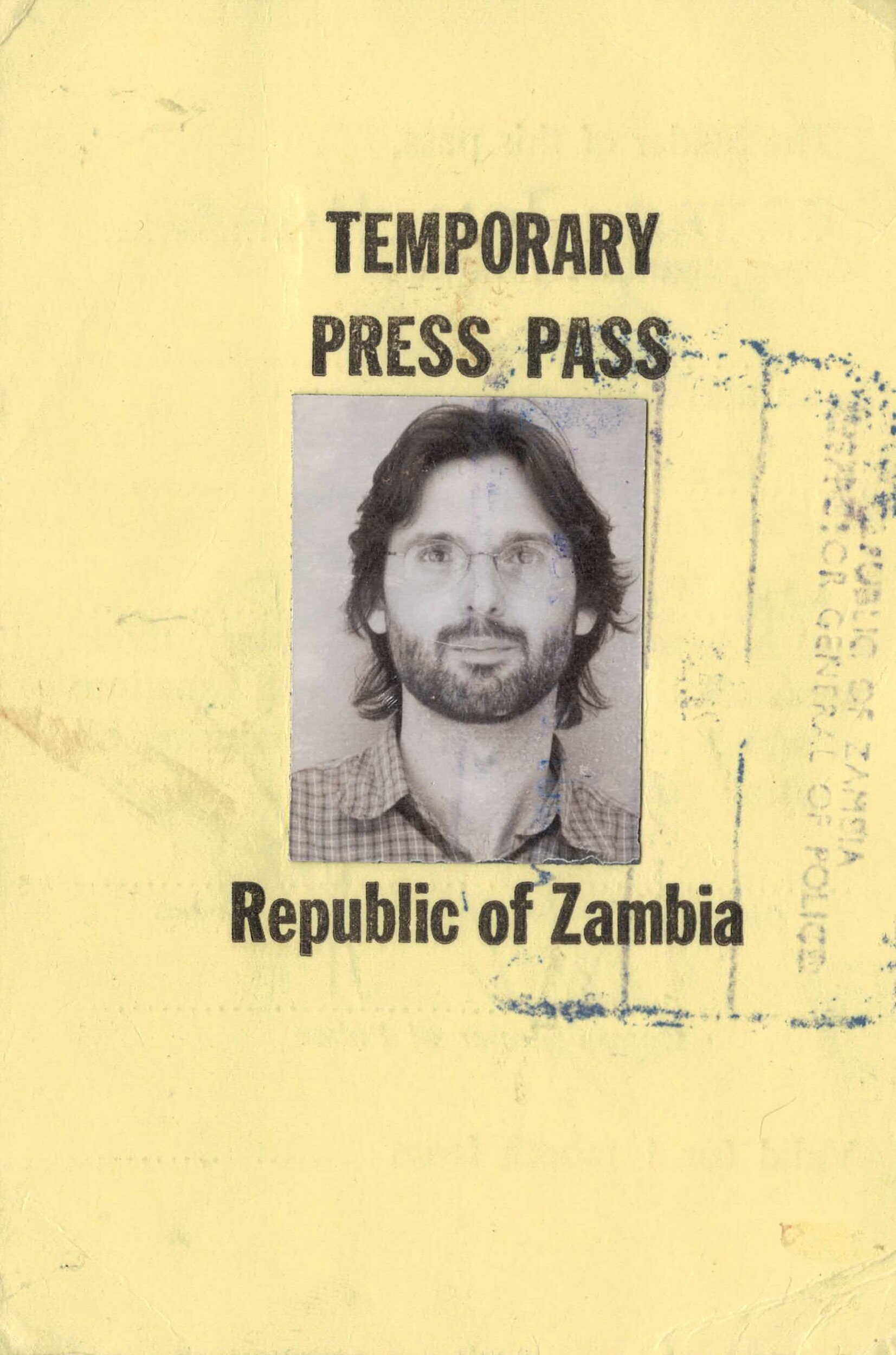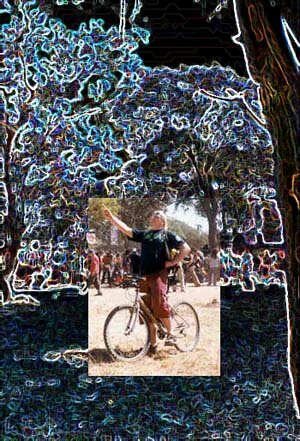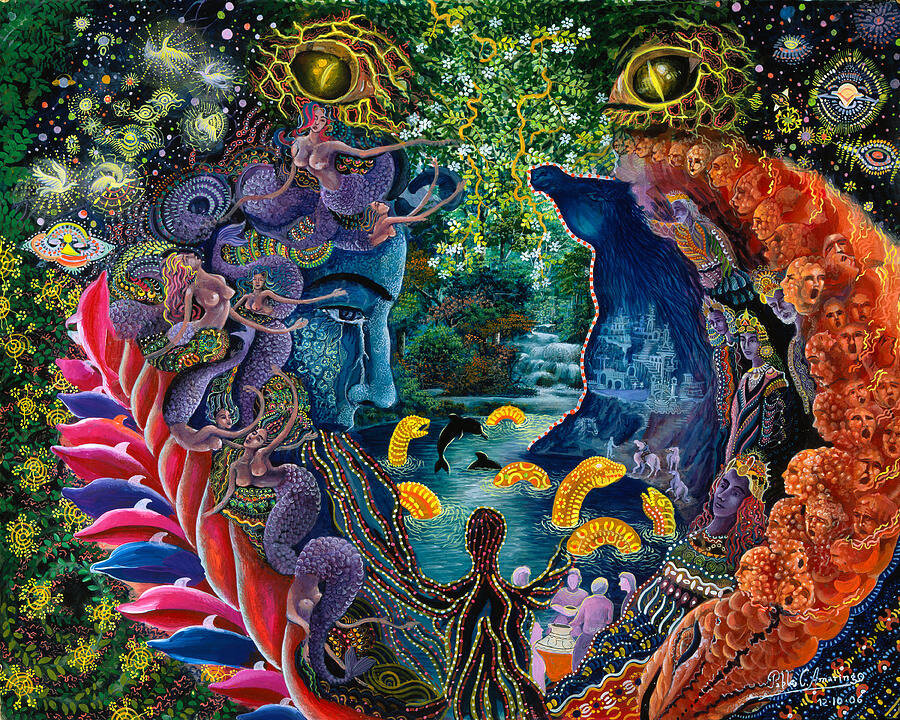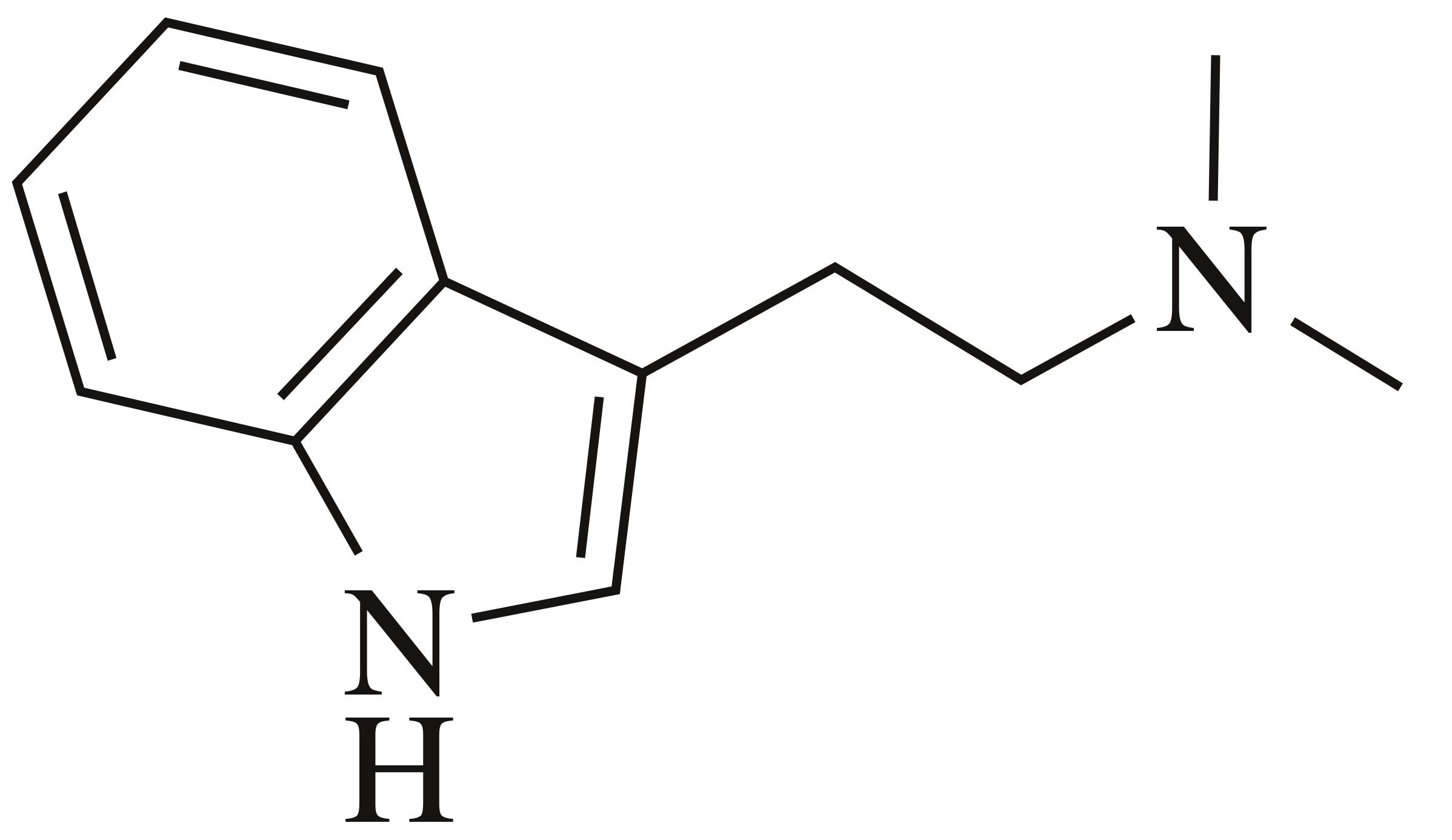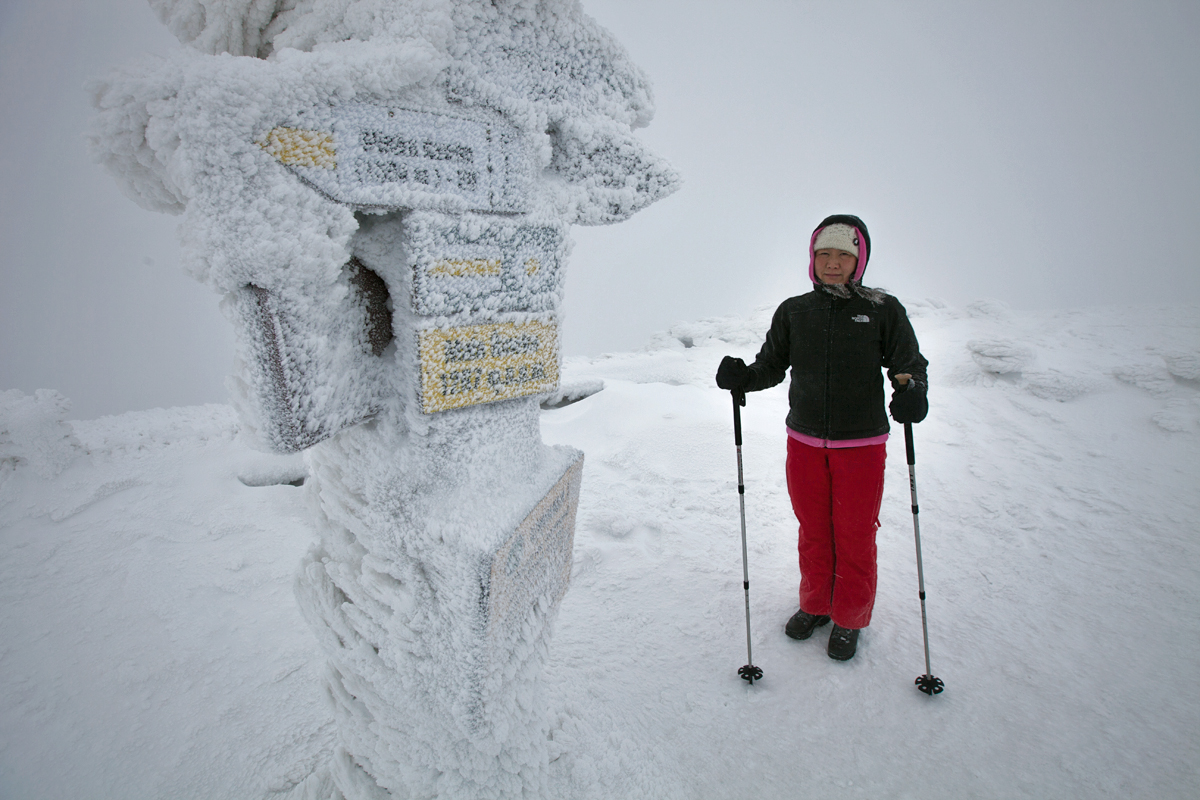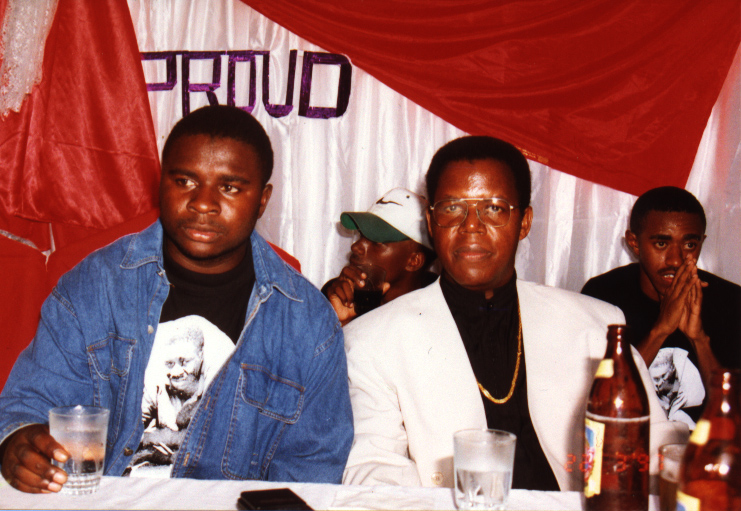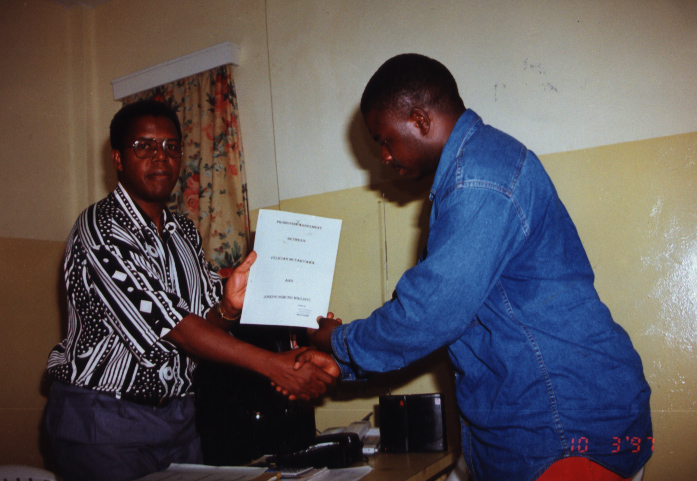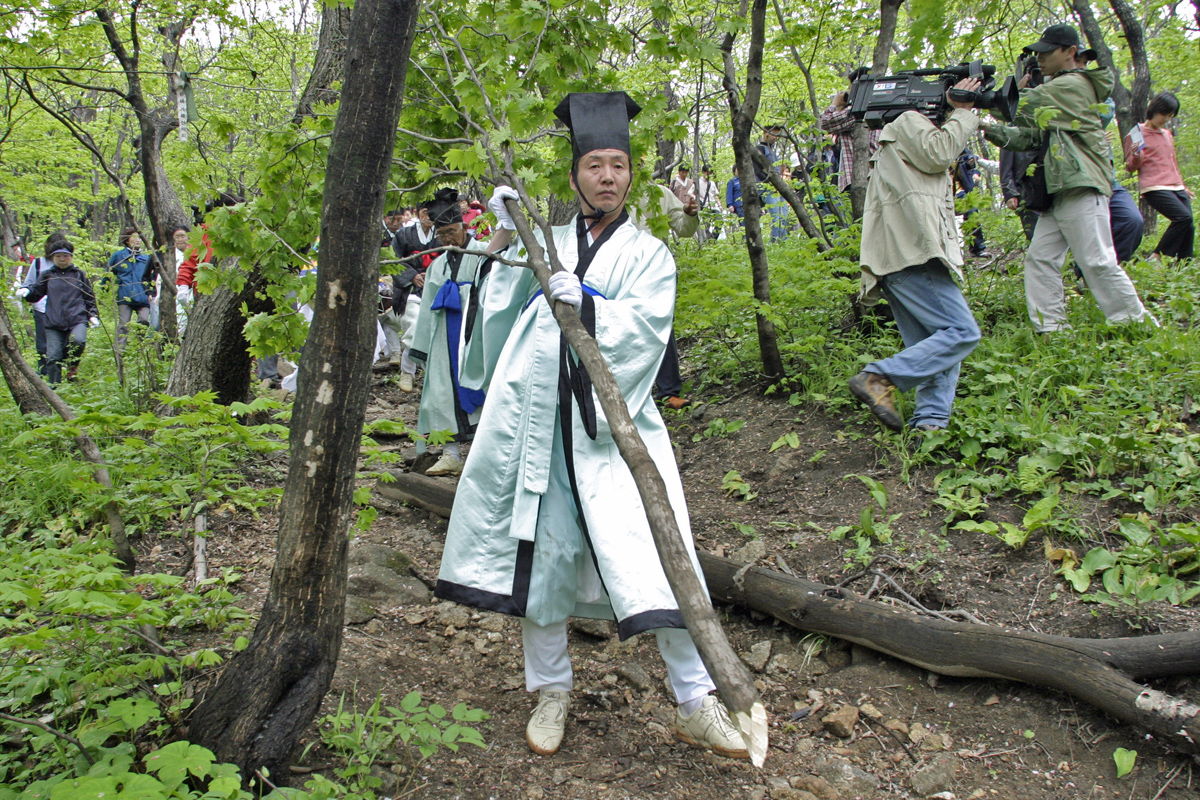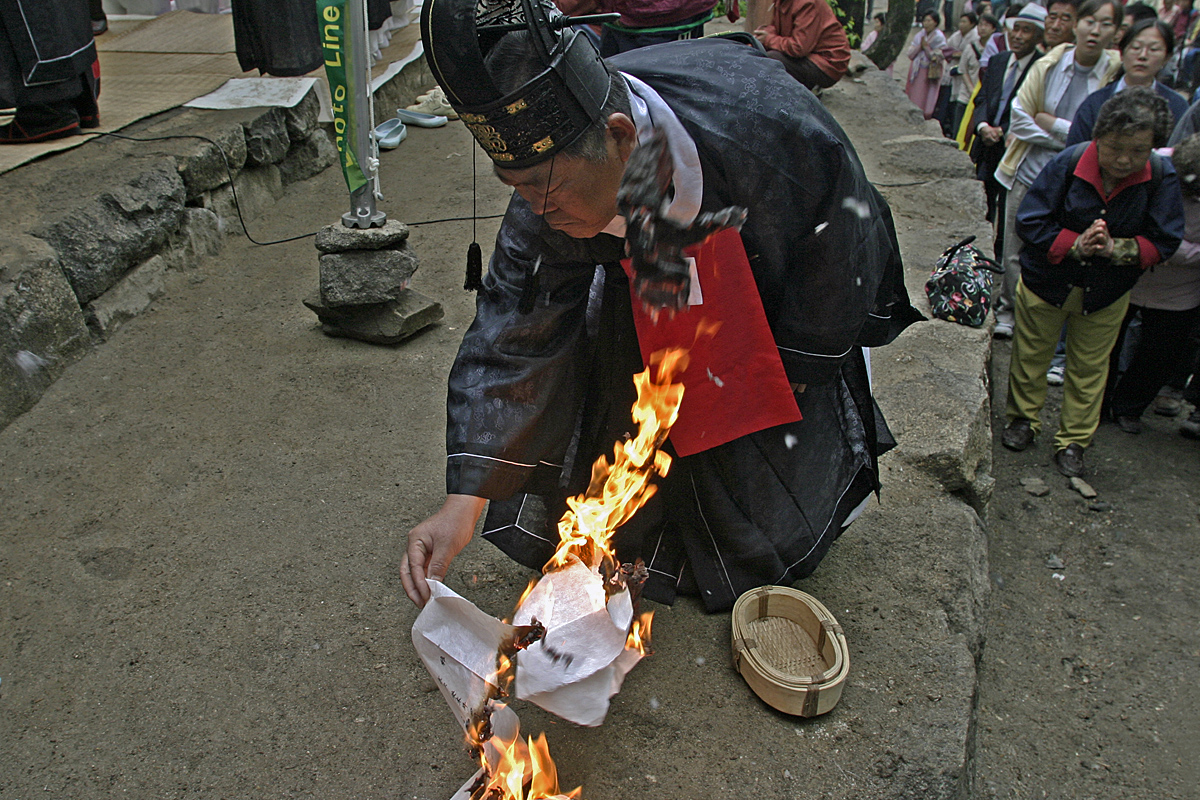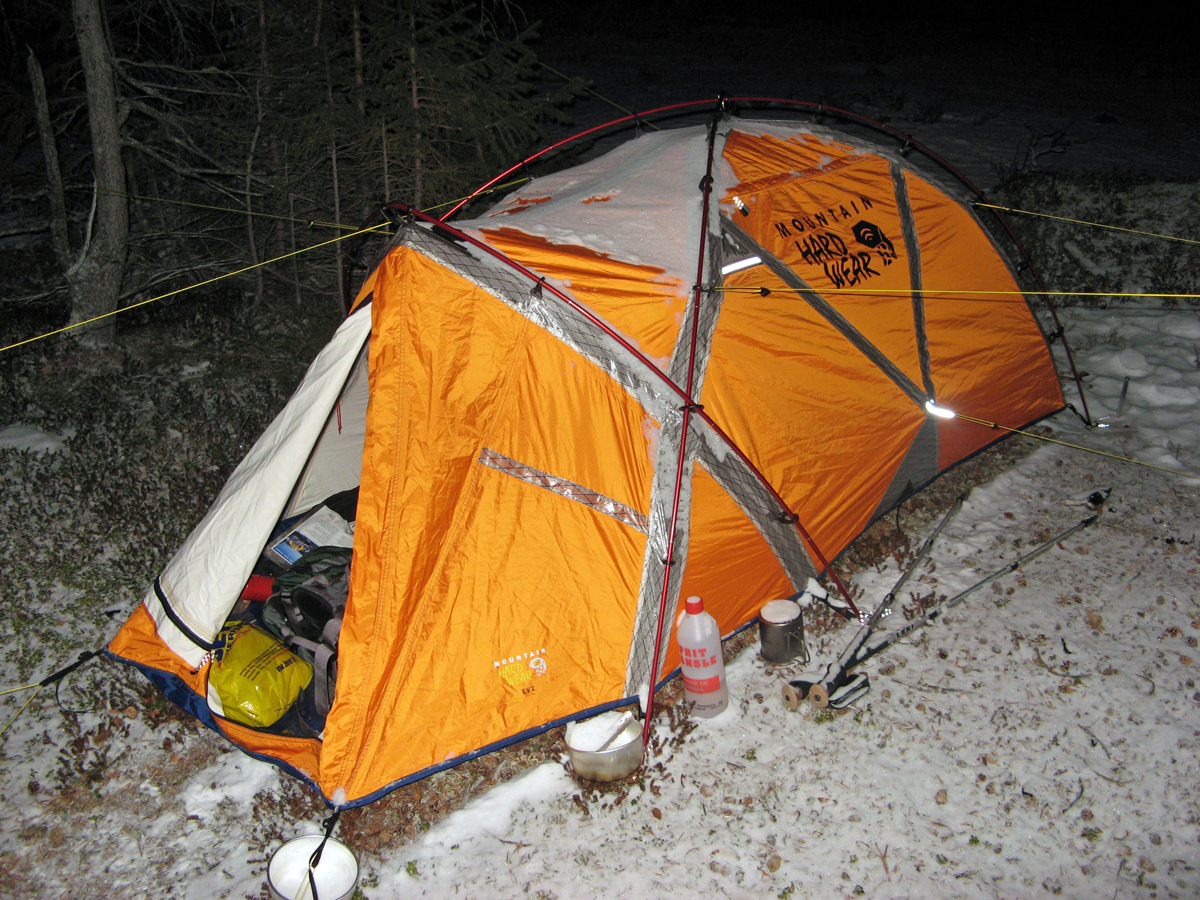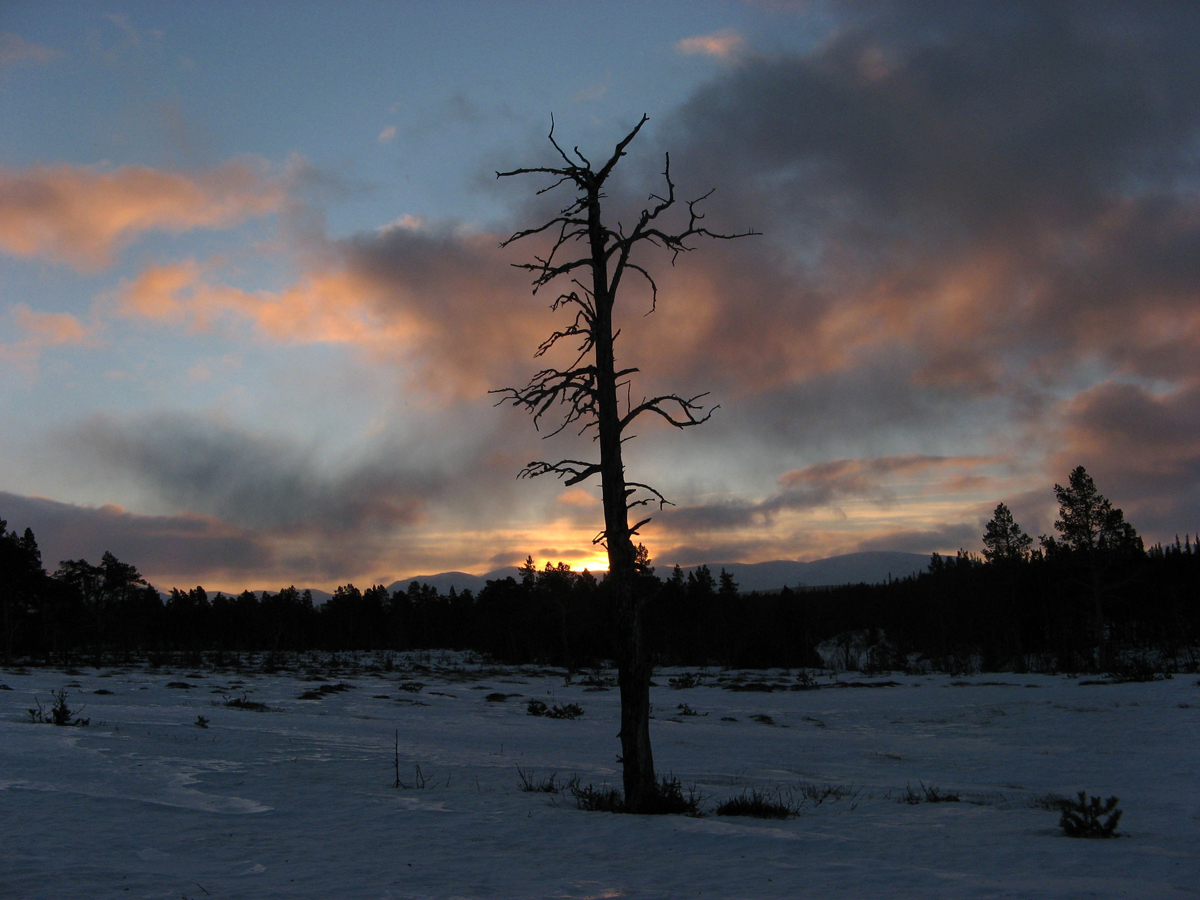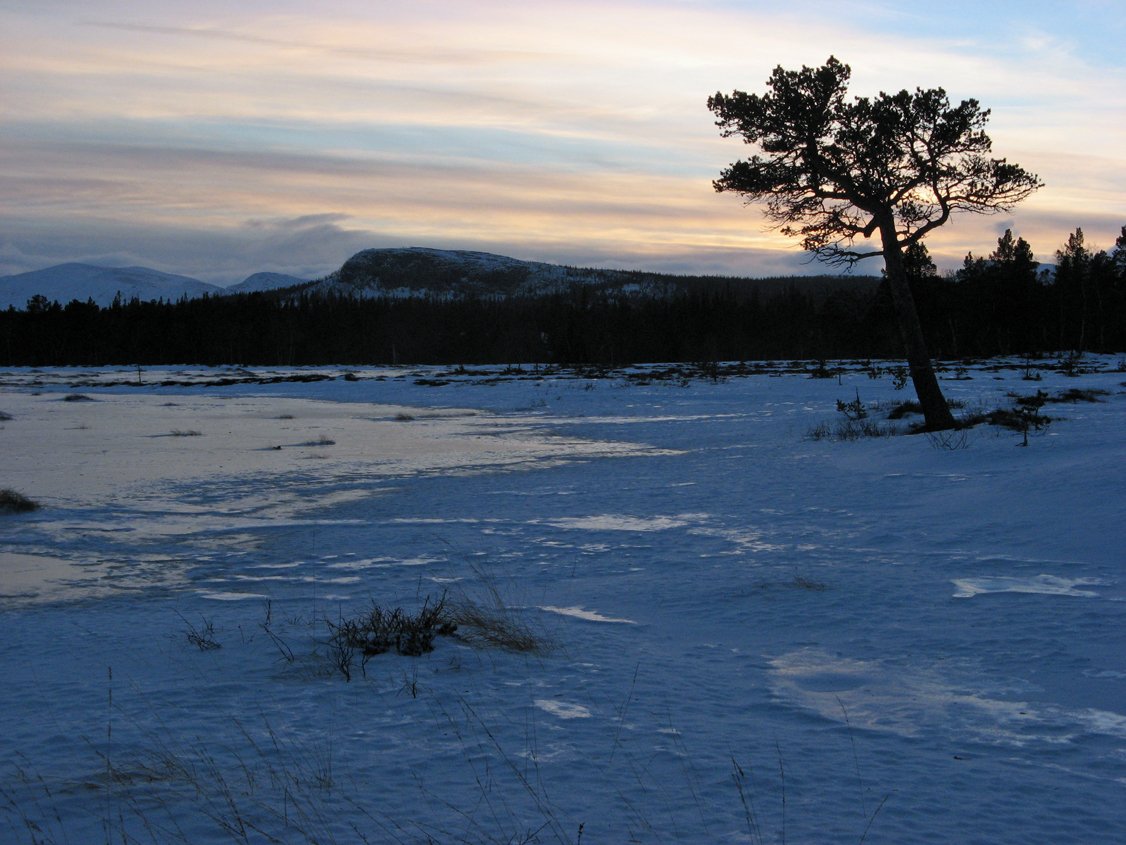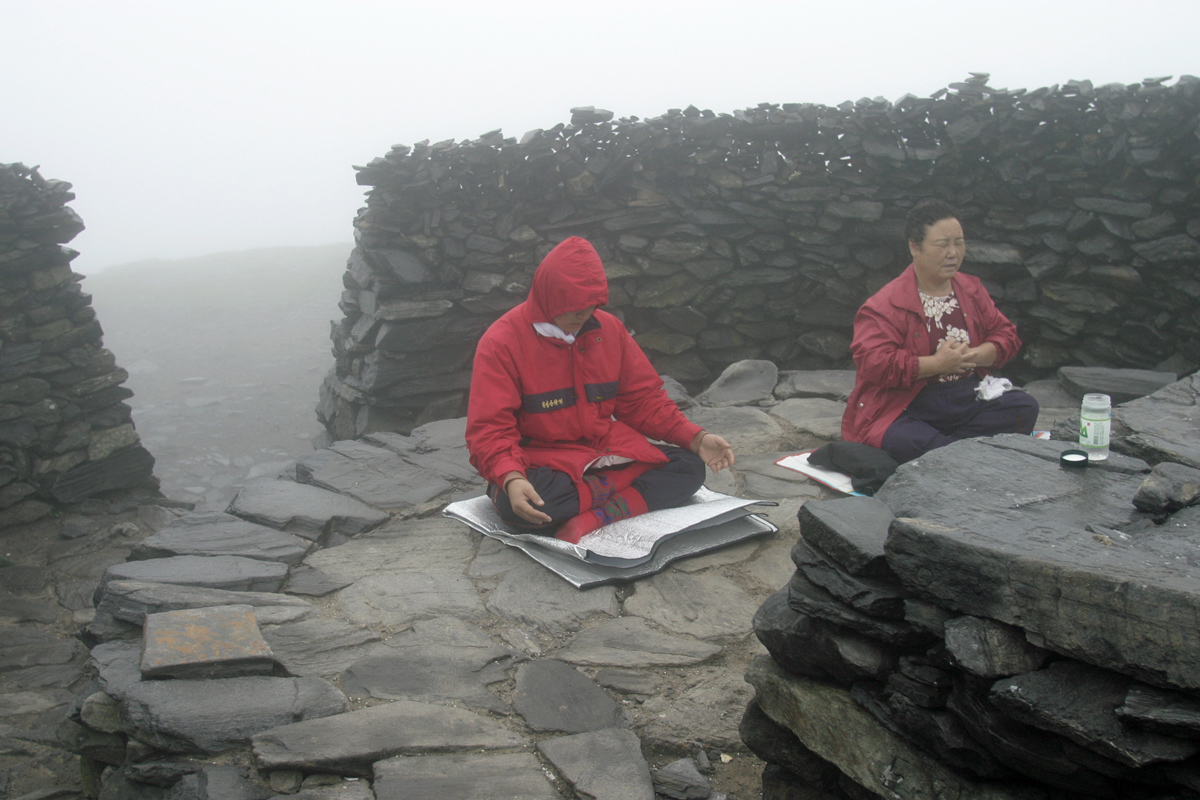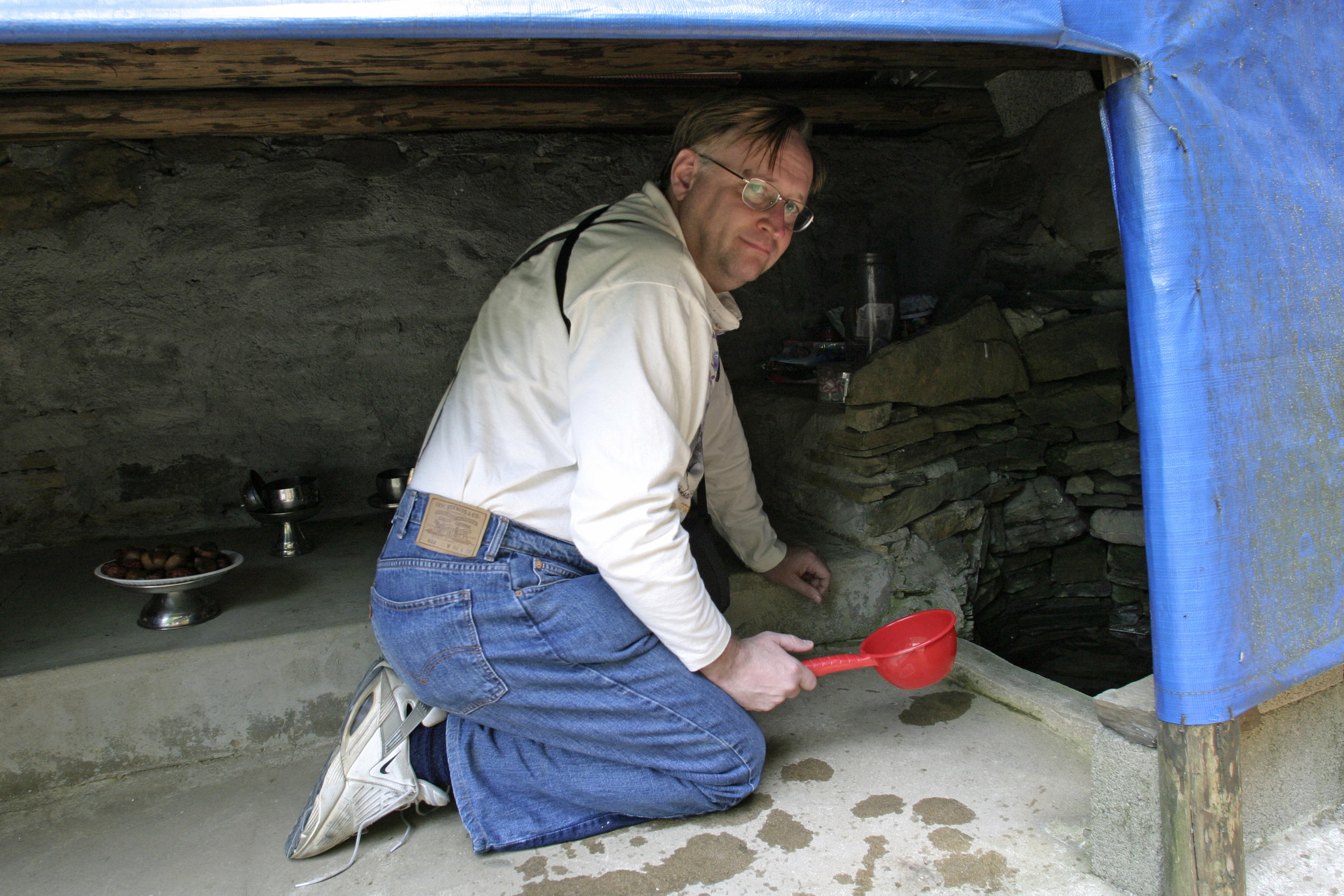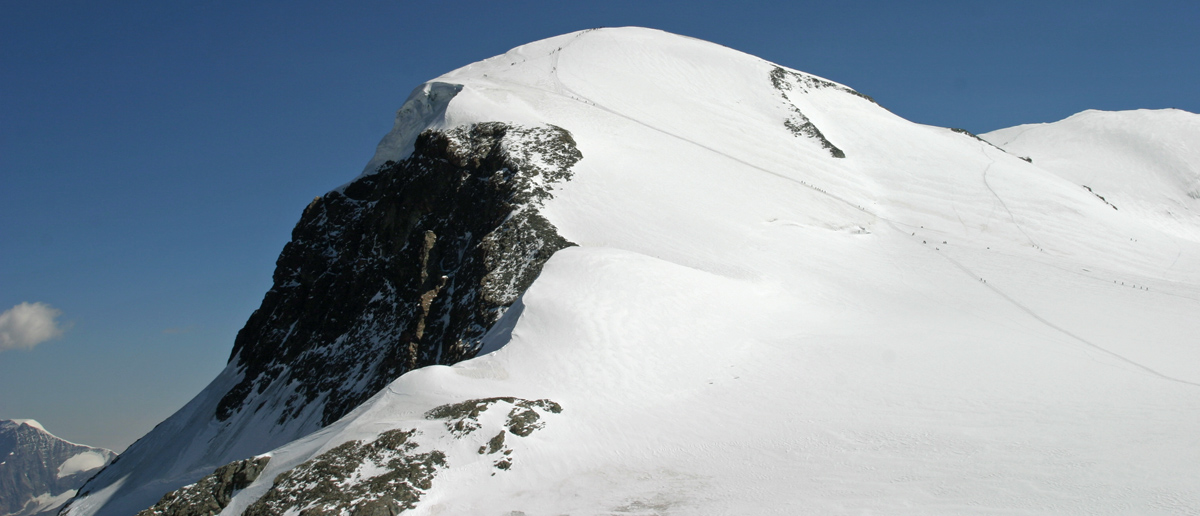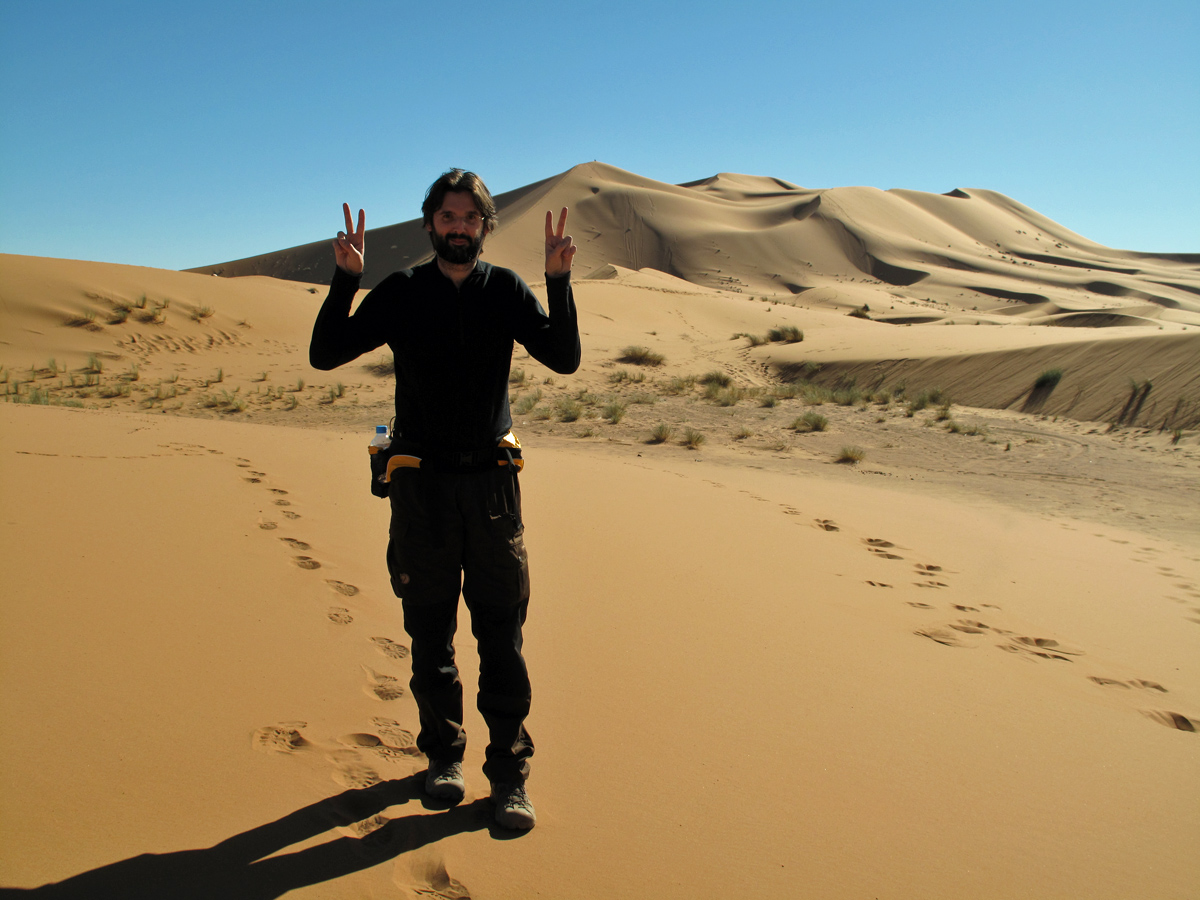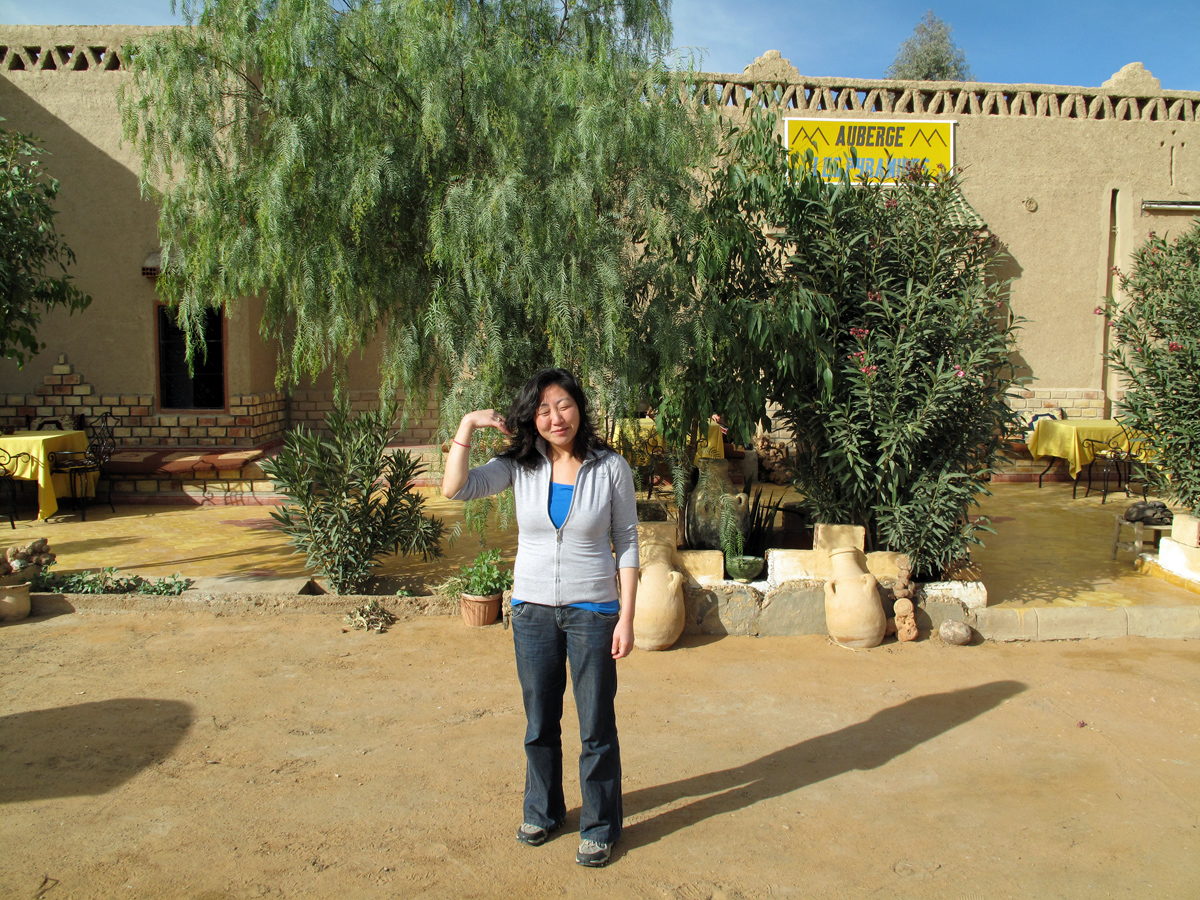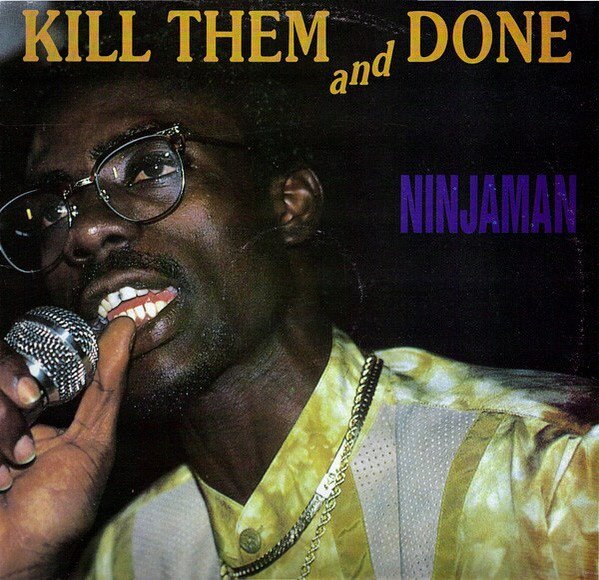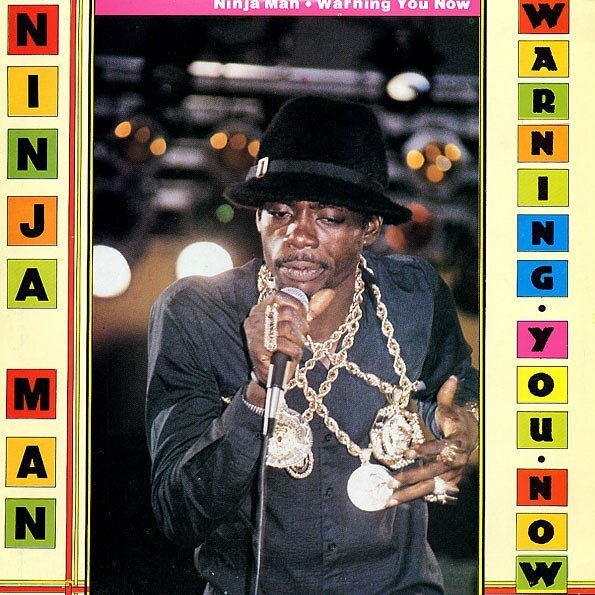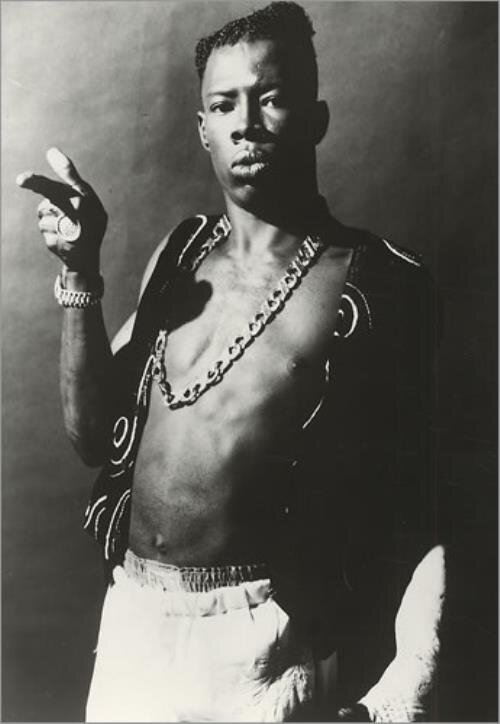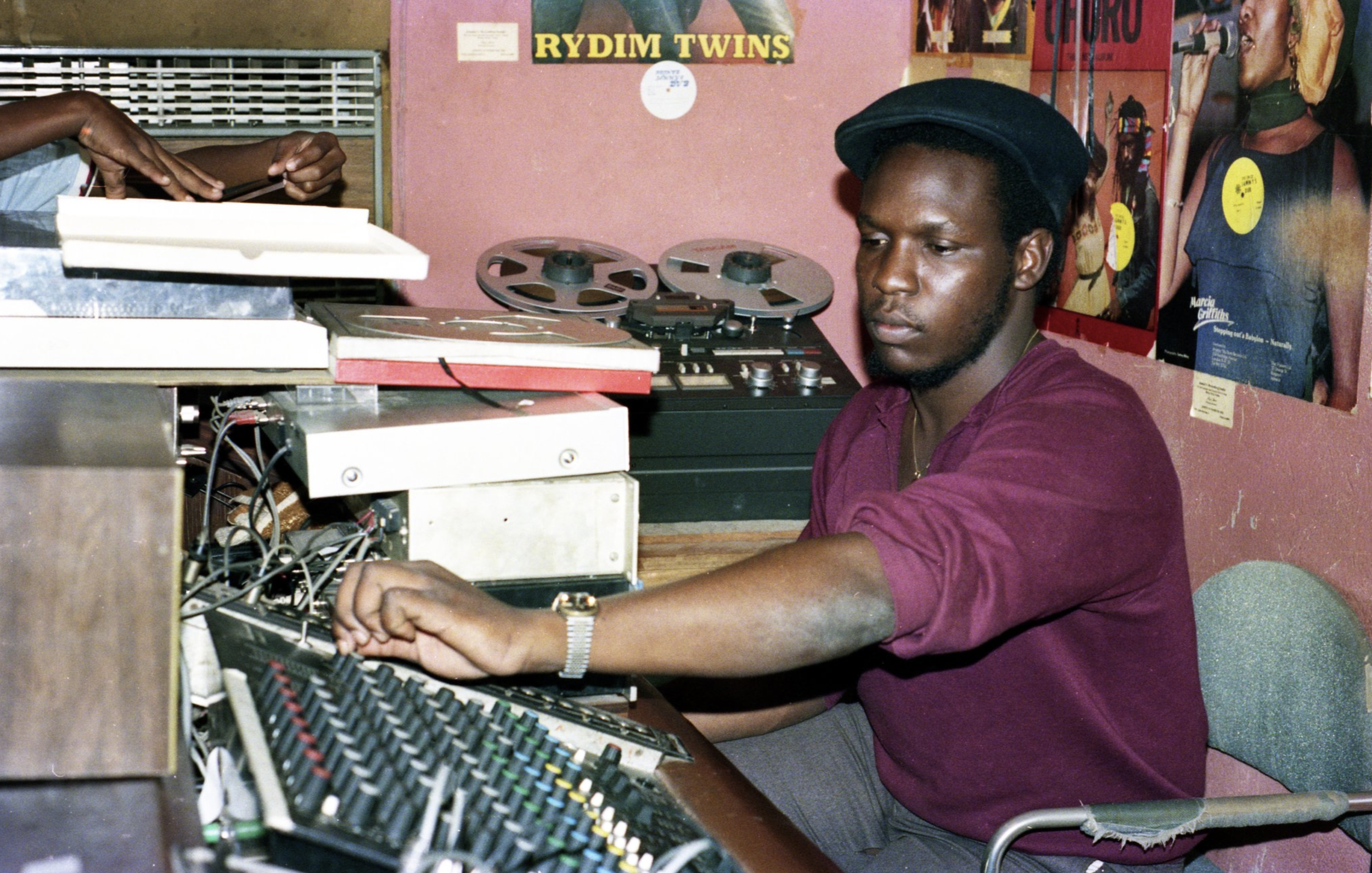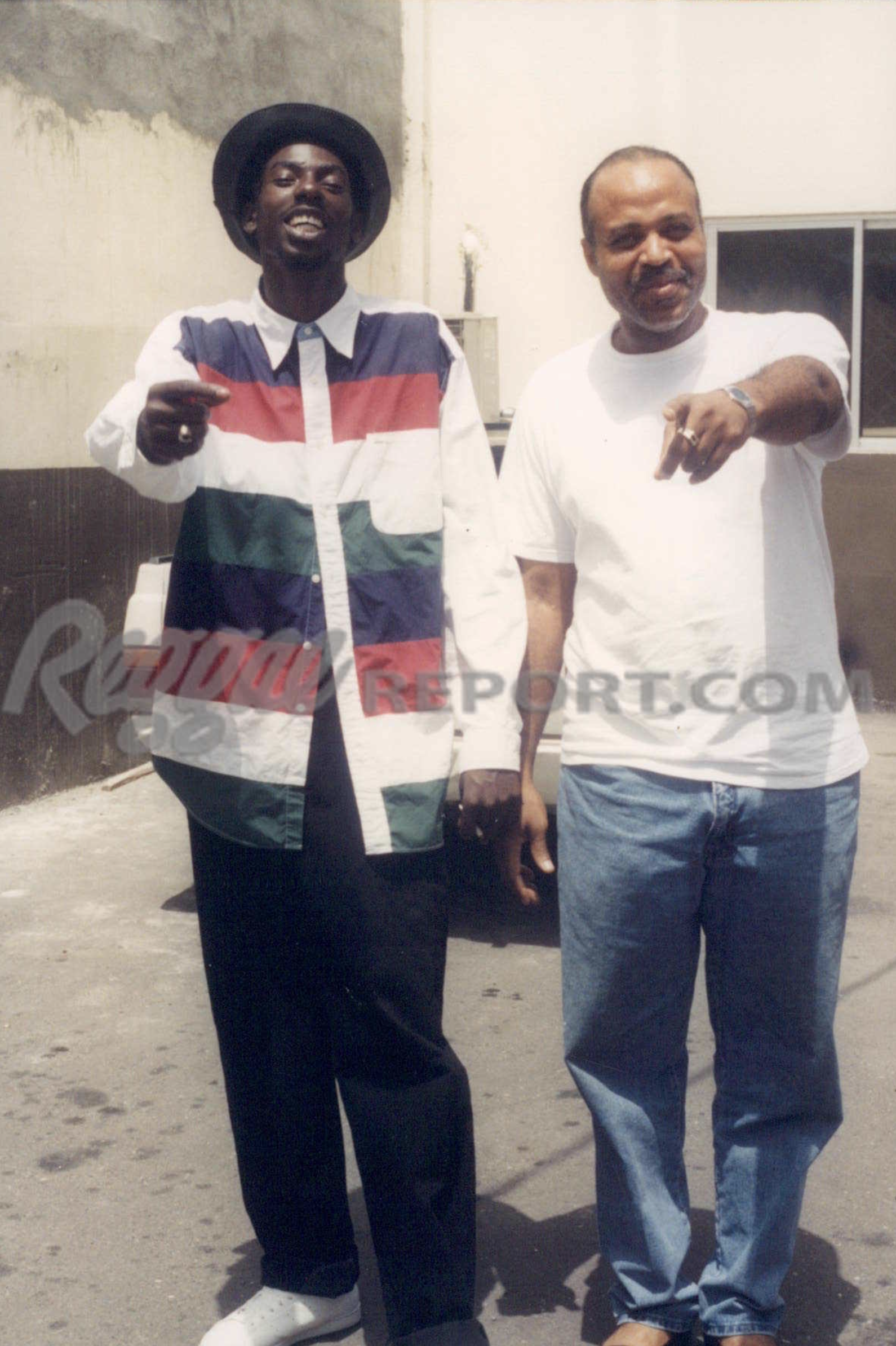The Arabian Peninsula in the back, view towards the coast of the Sinai.
The promised land
In May 1995 I travelled to Cairo for a round trip to Sinai, Jordan, Syria, Israel/West Bank and back to Cairo. It was a couple of years after the airplane crash and I hadn’t yet invested in a new camera set. I travelled with a simple point and shoot camera. I had a contact near Dahab, a young Tarabin Bedouin and the love interest of one of my class mates at the University of Amsterdam. I remember the long bus ride from Cairo through the Sinai. I didn’t stay in Dahab but checked into a small reed hut on the beach near a restaurant run by refugees from Sudan. The place was peaceful and very quiet. Every night the hot wind from the Arabian Peninsula hit the dark beach under a starry sky.
Swimming with the dolphins. I brought a cheap throw-away underwater camera with me.
Mount Sinai
The Sinai is home to Jabal Musa (2,285-metre) where Moses is said to have received the Ten Commandments. You ascend the mountain at night to witness the sunset on the peak. Down in the valley the 6th-century Saint Catherine's Monastery is located. The monastery contains the bush which is said to be the original Burning bush of Moses. Watching the sun rise of Mount Sinai was the only moment I was surrounded by other tourists, mainly christians travelling in groups.
Tarabin Bedouin
After a few days I met the Bedouin guy and arranged a night in the desert by 4-wheel drive accompanied by two of his friends, one driver and somebody to prepare a meal. The evening passed by with storytelling.
In the desert we made a campfire for some basic cooking and we slept under the stars.
From Dahab I took the bus to Nuweiba to catch a ferry to Akaba in Jordan. I first headed into the desert of Wadi Rum before visiting Amman, the capital. The British archaeologist and army-office T. E. Lawrence passed through Wadi Rum several times during the Arab Revolt, a military uprising of Arab forces against the Ottoman Empire in the Middle Eastern theatre of World War I.
Wadi Rum
I don’t recall any other tourists in Wadi Rum except for a Swiss guy I befriended. We simply hiked into the desert. The desert is one of the quietest places I have experienced. I remember sitting in the shadow of a rock and hearing the wings of a large bird cleave through the air.
In the desert we found some petroglyphs. At that time I had no information on the age of the rock carvings. I have since learned Wadi Rums contains some 25,000 petroglyphs and 20,000 inscriptions going back thousands of years. Wadi Rum is now a UNESCO Protected Area.
Damascus, Syria
I took a taxi from Amman to Damascus. I cannot find any photographs I made in Syria. I did visit the Al-Malik al-Zahir hammam, built in 985, and had my skin almost scrubbed off. I wondered about the racy open crotch women's underwear on the market, while most women were completely covered. I never printed a photo I took in Syria but I did buy a remembrance card of Bassel al-Assad.
It was the reign of Hafez al-Assad who was president of Syria since 1971 and was the center of a cult of personality. In 1994 his son Bassel al-Assad died in a car accident and plasticised cards with the portret of Bassel and Hafez al-Assad could be seen at many shops. Being the eldest son, Bassel was seen as the successor of Hafez al-Assad. Instead, Bashar al-Assad would become the president in the year 2000 and in 2020 is still in power.
From Damascus I took a bus back to Amman and a shared taxi into Jerusalem driving through the West Bank, which was divided into an Area A, B and C after to the Oslo Accords (1993-1995). The Palestinian National Authority ruled only a small part of the West Bank in 1995. The fate of East Jerusalem, being the hot potato it is, was excluded in the Oslo Accords. Our taxi was held at gun point when we entered the city. I had to show my passport while an assault rifle was pointed at my head.
I stayed in a hostel in East Jerusalem. In 1995 the city felt tense. Whenever I arrived at my hostel after dark I was pelted with fruits thrown by youngsters. I didn’t look Arabic, but I could pass as being Jewish or just as being different.
Through another friend at university I had a contact in West Jerusalem, a rabbi she met while she was working in a kibbutz. He invited me in. I asked some questions about Kabbalah but he told me that information was dangerous for somebody not initiated.
Jerusalem is a city you will never forget. No wonder Jerusalem syndrome is a thing, even though is not listed as a recognised condition in the International Classification of Diseases. In Jordan and Syria I got used to sit down in mosques and enjoy a quiet moment. When I attempted the same in the Dome of the Rock a lady started shouting at me.
In Tel Aviv I had to visit the Egyptian embassy to buy another visum to enter Egypt and I made my way back to Cairo via Eilat and Taba.
I sent a postcard to my parents from Syria. On the back it doesn't say who this man is.
Miste 1970s
After ignoring the family photo albums for decades it is finally time to digitalise our old photographs. These photos were taken by my mother in or around our family home in Miste-Winterswijk, a small hamlet near the border between The Netherlands and Germany.
Austin Mini
My father drove a Mini until the last available model he was able to buy was scrapped in 1996. The first model I remember was a Mark II and produced by Austin (BMC). In Qatar he owned an Austin Mini Countryman Mk II (launched in 1967).
The naming convention of the Mini is confusing at best. The Mini was launched in 1959 by British Motor Corporation Limited (BMC) which was formed by merging Morris Motors and the Austin Motor Company. Both companies retained their corporate identity and the Mini was both marketed as the Morris Mini Minor and the Austin Seven, the latter was rebranded in 1961 as the Austin Mini. In 1968 British Leyland was formed by merging BMC (called British Motor Holdings from 1966) and Leyland Motors. The Mini Mark III was therefor a British Leyland Mini.
Austin Mini de Luxe
While many Shell employees drove their car home from Doha, Qatar back to The Netherlands or the UK (roughly 6.500 kilometers) my father took an airplane to Schiphol because he thought the long road trip was too dangerous for a young child. He sold the Mini Countryman.
In May 1970 he bought an Austin Mini 850 de Luxe in The Hague. Year of build 1970. The original invoice has the British Leyland logo but the car is clearly named “Austin Mini 850”. In 1970 they were apparently still selling the Mini under the Austin brand name. The colour was Sabbia Grey with black interior and cost 5.504 Dutch guilders after 12% tax and including a roof rack. This is € 12.514 adjusted for inflation.
He never had a love for cars and to him it was just a cheap and practical car. In hindsight it was a damn cool car.
His third Mini was probably a Mark IV (produced between 1976 - 1983) in olive green and his fourth and last Mini was probably a Mark V in red. He drove his cars until the mechanic deemed the car too expensive to repair. Those Mini’s didn’t last very long.
The Mini Cooper was a sportive version and the result of John Cooper, designer and builder of Formula One cars, collaborating with Mini-designer Alec Issigonis. Famously the Mini won the Monte Carlo Rally in 1964, 1965 and 1967. The race was held between several European cities and Monaco.
Leyland Mini advertisement 1977. This was four years after United Kingdom's membership of the EEC. Note the Red Ensign on the ship.
My father’s first Mini in Qatar. Back in The Netherlands he bought an Austin Mini 850.
Our 1970 Austin Mini 850 Mark II in Sabbia Grey. Photo: 1973 or 1974.
After some digging in my fathers files I learned he bought his third Mini in 1976, which means the sabbia grey Mini only lasted 6 years! The olive green Mini was sold in 1985. On the invoice of the fourth Mini it is stated the old model he handed in was “defective” after only 9 years and was scrapped. His fourth Mini was a Mini 1000 model 1985 in “red” for the total sum of 11.850 guilders, which is € 10.589 corrected for inflation.
The red mini lasted only 11 years and was scrapped in 1996. In 1996 the Mini wasn’t available on the Dutch market. He bought a Daihatsu Cuore Life Style in white. In 2010 he bought this final car, another Daihatsu Cuore.
Mazda 3 仲間 Nakama
For the first time in my life I bought a car I consider a piece of art. A 2018 Mazda 3 hatchback in Machine Grey, 6 speed manual transmission and Skyactiv-G 2.0 petrol engine, which is a naturally aspirated engine. It’s an import from Germany, the Pfalz region to be specific. This special edition called ‘Nakama’ was presumably only sold in Germany. The only press release I can find is in German. The Nakama version has dark grey 18-inch rims and a semi-premium package including heated seats and steering wheel. In Japanese, nakama (仲間) means colleague, compatriot, friend or comrade.
Now it’s time to beat the hell out of this car and get it dirty.
Previous car: my 2015 Renault Clio IV Grandtour in color ‘Gris Cassiopée’ with a very fuel efficient 1.5 dCi diesel engine. Mercedes uses this (K9K*846) engine in its A and B classes.
Bijlmerramp
It is definitely a weird moment in life, the moment you realise your home is gone because a 747 jumbojet crashing into it. I survived by not being home. By the time I got home it was dark and the building was engulfed in bright orange flames. The smell of kerosine was everywhere. I couldn’t see my apartment on the 7th floor. I was suddenly homeless and without possessions. Neighbours were completely shell shocked.
I moved into apartment block Groeneveen 451 when I started my internship in Amsterdam with pop music photographer Rob Marinissen and documentary photographer Willem Diepraam in September 1989. Three years later on 4 October 1992 the airplane crashed when attempting to land with two of its engines torn off and malfunctioning hydraulics.
I had just graduated from the Royal Academy of Arts in The Hague (KABK) a few months before and this accident was a serious blow to my career as a photographer. In fact, after being in limbo for a year I decided to take a course in Cultural Anthropology at the University of Amsterdam. At that moment it was not clear how long I had to wait for financial compensation from Boeing and El-Al.
The real pain was realising the young children next door were dead.
In my basement I have a time capsule with newspapers from the week after the disaster, the original key to my door and the book ‘Een gat in mijn hart’ (a hole in my heart) with children’s drawings published shortly after. I will probably never open the time capsule.
The EL-Al Cargo Boeing 747-200 registration "4X-AXG”, which crashed into the apartment block Groeneveen/Kruitberg in Amsterdam Zuidoost.
The accident had a great impact on children who witnessed everything.
Reconstruction of the doomed flight
Model of moment of impact
București 1989
Between 1987 and 1992 I travelled to Eastern Europe as often as money allowed. During my first journeys to Bulgaria, Czecho-Slovakia and Romania the iron curtain was very much still in place. When I travelled to Romania for the first time Nicolae Ceaușescu and his wife Elena had been executed only a few months before. On 17 December 1989 93 demonstrators were killed in Timișoara by military forces, police, and the Securitate. On 25 December the dictator was dead. The Revoluția Român only lasted 9 days.
In Bucharest the scars of Romanian Systematization were obvious. The program started in 1974 and reached the capital city in the 1980s. Historic neighbourhoods were simply wiped out. The House of the Republic was built. When Ceaușescu was killed the project in the capital was not yet finished. In the skeletons of half finished apartment blocks Roma families had moved in, living under a roof but without walls, water or electricity. I was 20 years old and traveling without money for hotels. I had to rely on strangers to sleep.
Trans Europe by train
Over the years I took countless trains far into Southern and Eastern Europe, mostly with an Interrail ticket which was available for anybody between the age of 18 and 26. Destinations were: Greece, Bulgaria, Rumania, Hungary, Czechoslovakia and Yugoslavia.
Greek Shepard. Photo taken on my first ‘far away’ holiday without parents at 17.
The trains were great. You could open a window and stick your head out of the window until you became tired of the wind. These photographs were made during one journey to Slovenia somewhere in the 1990s and a couple of years after Slovenia became independent (1991).
Zambia, Solipse 2001
It is strange, trying to piece history together from a time before mobile phones. Images are difficult to find. I sure left my camera behind in 2001. In that year I travelled to Zambia for the solar eclipse of June 21. I ended up at the Solipse psychedelic trance rave somewhere Northeast of Lusaka among people from all over the globe. The story goes a group of Japanese arrived in a chartered Boeing 747, although that seems hard to believe.
The rave lasted for seven days from June 18 to June 25 with non-stop music blasting from the sound rig, which was trucked in from South-Africa. LSD “micro-dots” were easy to buy and so was pure MDMA. Amazingly the festival was opened by the Zambian Minister of Tourism.
I met a wild bunch of people from Israel, the United Kingdom - but they were actually from France and Brazil - and a Dutch guy who worked on Wall Street and was just moving back to The Netherlands to start a new trading division at a Dutch bank. I hitchhiked together with some Brits to the location in the back of a small truck. One of them had bought a big brown paper bag containing cannabis on the streets of Lusaka. He assumed the bag would contain some 5 grams of the plant at best. Imagine his surprise when he discovered the bag was completely full of cannabis. He was screaming. We tried our best but in one week we could not finish the bag.
Ayahuasquero
I wouldn’t call my self an ayahuasquero but the first time I drank ayahuasca I spent an evening in the kitchen with my good friend, brewing this shaman’s drink ourselves. We bought some Banisteriopsis caapi containing several harmala alkaloids as a monoamine oxidase inhibitor (MAO) and dried leaves of Psychotria viridis containing N,N-Dimethyltryptamine (DMT). Alternatively you can use Mimosa hostilis as a DMT containing plant. These plants are all native to the Amazon rainforest and some beyond up to Mexico.
The end result was a bottle of a brown, muddy liquid tasting incredibly bad. We had no idea what the correct dose would be, so we drank enough for a violent out-of-body experience into hyperspace, fighting space aliens until death for many hours. This was self administered under a full moon in nature. I’m not even sure if I’m brave enough to repeat the experience at this moment in life.
The Peruvian painter Pablo Amaringo made an attempt to visualise his ayahuasca visions. I believe it’s quite difficult to relate the ayahuasca experience to anything known in our three dimensional experience. Especially when time itself dissolves and you are sucked into inner visions. I think the visions are a direct product of our brain and not a real spirit world, which exists outside of our mind. The human mind is quite amazing. There are doors to be openend.
Paintings by Pablo Amaringo
After my first experience I drank ayahuasca in a ceremonial, and controlled, setting several times. Jah Levi (his real name) organised ayahuasca evenings when he was living in Amsterdam in the 1990s. With Jah Levi the music was always good. I also tried a ceremony with the Dutch Santo Daime Church, a Brazilian syncretic religion founded by Raimundo Irineu Serra, a descendent of African slaves, soon after his first encounter with ayahuasca in 1914. I considered the Santo Daime ceremony too strict. I wasn’t even allowed to move my chair because it would block the ‘spirits’. Because I don’t believe in spirits outside the human mind I considered this silly. If I want to move the chair I will move the damn chair.
“We are knocking on the door,
and the door is open wide.
For all to step inside.
We’re going deep inside.
Let the music fill your soul.
Great spirit is in full control.
Let the music fill your soul..”
Not sure what year this photo of Jah Levi is dated. I spent some evenings in his little shop in De Pijp where he held his singing circles. Those evenings were quite magical.
Basic structure of N,N-Dimethyltryptamine.
"Heyokah The Light Bearer" by Pavel Souviron CC BY-SA 4.0
Bieszczadzki Park Narodowy
The last day of 2011 I flew with Ho Jung to Kraków in Poland. The plane ticket was a gift from Ho Jung for Sinterklaas. In Kraków we rented a car and drove over snowy mountain roads to the border with Ukraine. On New Year’s Eve we found probably the last remaining hotel room in the area. We spent a couple of days hiking in the Polish part of the Bieszczady Mountains. In the first days of 2012 the mountains were pretty empty. One day we didn’t even encounter a single hiker.
Driving our Fiat Punto on snowy roads: great fun!
Bieszczady has a troubled history. Until 1947 the area was mostly populated (84%) by a Ukrainian ethnographic group speaking a dialect of the Ukrainian language. After the Ukrainian Insurgent Army assassinated a Polish general in 1947, the Ukrainians were expelled from Poland during Operation Vistula. Bieszczady was practically deserted afterward. Even today few people live in this vast area.
I always wondered if there was a country where they serve hot beer. In Poland I got my answer: Grzaniec, also known as Grzane Piwo, is a heated beer with spices, like cloves, cinnamon and ginger. Ours had a strawberry on the bottom of the glass.
Dar es Salaam to Amsterdam
In 1997 2-Proud launched his album Ndani ya Bongo on cassette tape making him the biggest star in Kiswahili-rap. In 1998 I invited Joseph Mbilinyi (2-Proud aka Mr II aka Sugu) to Amsterdam organising some sort of an "European tour". With the help of Thomas Gesthuizen he recorded a new album in an Amsterdam studio, John Gundlach and a good friend of him made a music video and I made daily telephone calls trying to get 2 Proud on stage in Amsterdam, on the radio and in newspapers, while he slept on my couch each night. I had succes with Hans Dulfer's radio show, a VPRO radio talk show, a journalist for the Dutch newspaoer Trouw wrote an article about 2 Proud, he shared a stage with the infamous Osdorp Posse at the Dread Rock Café, and he was billed as MC Too Proud at a Hip Hop Block Jam. Most of the photo's below were taken by unknown photographers.
After returning from Amsterdam his career took off. Joseph Mbilinyi kept on making rap albums and in 2010 he took office as a Member of Parliament for Chadema, a center-right political party in Tanzania running largely on an anti-corruption platform. His life is really an amazing success story.
Ndani ya Bongo - Kiswahili rap
I made these photographs in 1997 for my M.A. thesis 'Ndani ya Bongo, Kiswahili-rap keeping it real' (2000). A shorter version of my thesis was published in 2000: Gesthuizen T. and Haas P.-J. ‘Ndani ya Bongo. Kiswahili rap keeping it real’, in Gunderson F. and Barz G. (eds), Mashindano! Competitive Music Performance in East Africa. Dar es Salaam: Mkuki na Nyota, 2000. As far as I know this was the first scholarly publication on Tanzanian hip-hop culture and rap music.
G.W.M - Gangsters with Matatizo (=problems).
2 Proud, Mr II, Sugo; real name: Joseph Mbilinyi.
KABK
My first education after secondary school was the now closed School of Photography in The Hague followed by a year at the Koninklijke Academie van Beeldende Kunsten / Royal Academy of Art, The Hague (KABK). Most photos are lost due to the airplane crash but some survived in my parents house.
First year field trip with my class to the Belgium Ardennes.
Photo: Raimond Wouda. Me holding my Sheridan 500 air rifle.
Rila mountains, Bulgaria.
Springtime in Odae-san 오대산
Odae-san 오대산 is one of the sacred mountains in Korean Buddhism and Shindo. On May 15, 2003, a spring festival and ritual was held around San-shin-gak 山神閣. The feast consisted of a female shaman selecting a large branch from the spring forest. Cutting down the branch was a man's work. The festival was attended by many television crews who almost knocked each other over. The patch of ground behind the san-shin-gak is a place where sacrifices are made to san-shin 山神 and other gods and spirits.
The spring festival may have been part of a larger Gangneung Dano-je [2] held every year on the fifth day of the fifth month of the monthly calendar. Gangneung Dano-je was described by Heo Gyun [1] in 1603. The people of the village believed that disaster was imminent if sacrifices were not made to the mountain gods.
1 ] https://en.wikipedia.org/wiki/Heo_Gyun
2] https://www.danojefestival.or.kr/
Vålådalen
In the final weeks of December 2007, fleeing an impending divorce, I thought it would be a good idea to take the train in Stockholm to Jämtland. Finally, after a long train journey, and a lift from a Swede in a Volvo, I ended up in a mountain hut in the Vålådalen Nature Reserve. There I bought all the pure alcohol I could find - for cooking! - and then walked into the woods. After half a day of walking I set up my tent.
The nights were long and deadly dull. The sun set at three in the afternoon, only to rise again around nine in the morning. Eighteen hours a night I lay in my sleeping bag with Melville's Moby Dick as the only distraction. However, the short days were spectacularly beautiful. Didn't meet anyone in all those days. I saw one elk and a few birds. With temperatures of minus 15 degrees Celsius it was a relatively mild winter. Merry Christmas mr. Haas!
Sacred mountain Taebeaksan 太白山
Tae Beak San (literally: great white mountain) is one of the twelve most sacred mountains in South Korea. On the mountain top is a Cheonje-dan 천제단; an altar where sacrifices can be made to Heaven. Since the kingdom of Silla (57 BC to 935) sacrifices were made to the sky gods on Teabeaksan. That ancient old tradition still exists. I visited Taebeaksan several times in 2003. Alone, in thick summer fog, but also together with David A. Mason, author of the book Spirit Of The Mountains: Korea's San-shin and Traditions of Mountain-Worship.
Manggyeong-sa
The temple Manggyeong-sa (망경사) is situated just below the peak. According to legend, the temple was founded by Master Jajang-yulsa (590 - 658). He had learned that a stone Munsu-bosal (Manjushri, Bodhisattva of Wisdom) had appeared just below the royal altar, at the Yong-jeong well. In addition to a hall for the Buddha, Manggyeong-sa also has a Samseonggak (trinity hall) where Sanshin, Chilseong and Dokseong are enshrined. Throughout the area around Teabeaksan are numerous temples dedicated to Sanshin and Yongwang.
The oval Cheonje-dan altar consists of stacked stones and has a circumference of 27.5 meters, is 3 meters high, 7.76 meters wide, and measures 8.26 meters in length.
A few hundred meters from Cheonje-dan is the second peak - Janggun-bong (Guardian General Peak) - where the smaller altar called Janggun-dan can be found.
Manggyeong-sa - which means 'All-encompassing-View Temple' in English - on a stormy and rainy day in August 2003. Manggyeong-sa is together with Myohyang-am (Jiri-san) the highest Buddhist temple in South -Korea (1500 meters).
David A. Mason in 2003. In 2016 is David Assistant Professor of Korean Public Service for Chung-Ang University, Dongjak-gu, Seoul.
Breithorn 4164 meter
It is not easy to climb a 4000’er mountain with a slight fear of heights. With my lack of alpine climbing experience I had joined a local mountain guide and small group. From the Klein Matterhorn cable car station (3883 meters) it is a few hours' climb to the top. So you actually climb a vertical difference of 281 meters. The summit itself turned out to be a small plateau of a few square meters with a cliff of about a thousand meters on the other side. Because of the extreme storm that day, I was not very comfortable on the top. I had the feeling that I could blow into the abyss any moment. After a few minutes, the guide summoned us to prepare for the descent in the lee, a few meters below the top. He hadn’t often experienced such a strong wind, he told us.
The Swiss Alps, undated.
Marokko road trip: Casablanca - Merzouga
Via Marrakesh (مراكش), Ouarzazate (ورزازات) en Zagora (زاڭورة). Januari 2009.
Erg Chebbi zandduingebied van 8 bij 25 kilometer met toppen tot 150 meter hoog.
Tagine slow food in Merzouga.
Tagine met groente.
Satellite image of Erg Chebbi. USGS, Public Domain. - United States Geological Survey
“I’ve got the permit to bury and a license to kill ”
Dancehall reggae
From the first hard hitting digital beats of Shabba’s "Gal Yuh' Good" I was hooked. It was 1991. Ninjaman was a rising star and a year later, in 1992, Buju Banton would release the album ‘Mr. Mention’ produced by Donovan Germain.
By the early 1990s reggae music had evolved into dancehall with influenzal producers like Bobby Digital and King Jammy. Years before in 1984 King Jammy and Wayne Smith developed the first computerized sound based on a pattern found on the Casio MT-40 home keyboard. The Sleng Teng riddim was an instant hit in the dancehall.
By the early 1990s riddims were often digital, performances more aggressive and extravagant. The lyrics explicite, Yellowman experimented with slackness, Ninjaman adopted gun talk lyrics, not perse glorifying violence, but as a metaphorical language. Dancehall reggae is machismo in overdrive.
My favourite, but controversial, artist is Ninjaman, born as Desmond John Ballentine in 1966. Ninjaman recorded his first hit single in 1987. Between 1989 and 1992 Desmond cemented his career through an unique style of performing lyrics. In the early 1990s he ruled dancehall and sound clash. In 2017 Desmond was convicted to a life sentence for the 2009 murder of Ricardo Johnson.
Spots Road Show
In Amsterdam a Dutchman from Suriname (artist name: Daddy Dan) set up a Jamaican style sound system called Spots Road Show. He held regular shows at Cafe De Kroeg (Lijnbaansgracht). The Spots Road Show has now faded from memory, even Google doesn’t hold any record of it. I was a regular at the shows, while it lasted. It was a narrow place with a tiny dance floor. The speakers were stacked from floor to ceiling. The heavy bass literally shook the floor as the needle hit the groove.
During the nineties, as I was deciphering the Jamaican patois, I grew angry over the often homophobic lyrics of Jamaican artists. At one point I stopped visiting live concerts because of this. Shabba Ranks was dropped by Epic records in 1996 due to his homophobic views which basically ended his career.
I still love dancehall reggae though. The music is ingrained into my being.
Buju Banton’s first album: Stamina Daddy.
Shabba Ranks. First international album “As Raw as Ever” produced by Bobby Digital
Discography
Buju Banton - Song: Quick. Album: Stamina Daddy. Year: 1992. Stalag riddim.
Buju Banton - Song: Murderer. Year: 1993. Far East riddim. Producer: Donovan Germain.
Shabba Ranks - Song: Dem Bow. Album: Just Reality. Year: 1990. Poco Man Jam riddim. Producer: Bobby Digital.
Ninjaman - Song: My Weapon. Year: 1990. General (1) Riddim (1967). Producer: Mr. Doo.
Ninjaman - Song: Permit to Bury. Year: 1991. Soap riddim. Bobby Digital · Digital-B.
Sizzla - Song: Solid as a Rock. Year: 2002. Cuss Cuss riddum. Producer: Robert ‘Bobby Digital’ Dixon.
Capleton - Song: Cold Blooded Murder. Year: 1993. Far East riddim. Producer: M. Johnson.
Capleton - Song: Slew Dem. Year: 2003. Bellyas Riddim.
To be expanded..
The producers
Onwards
By the middle of the 1990s, Buju Banton embraced the Rastafarian faith. Obviously there was more to life than slackness and gun talk. In 1993 deejay Pan Head was shot in the head, which led Buju to write the song “Murderer”. Capleton recorded "Cold Blooded Murderer” in the same year. Pan Head’s murder shocked the music community of Kingston.
With Buju Banton’s philosophical album 'Til Shiloh' a new brand of dancehall emerged. Now artists like Capleton, and Buju were moving away from their early work and were soon growing dreads.
Capleton. Born Clifton George Bailey III in 1967.
Buju Banton








